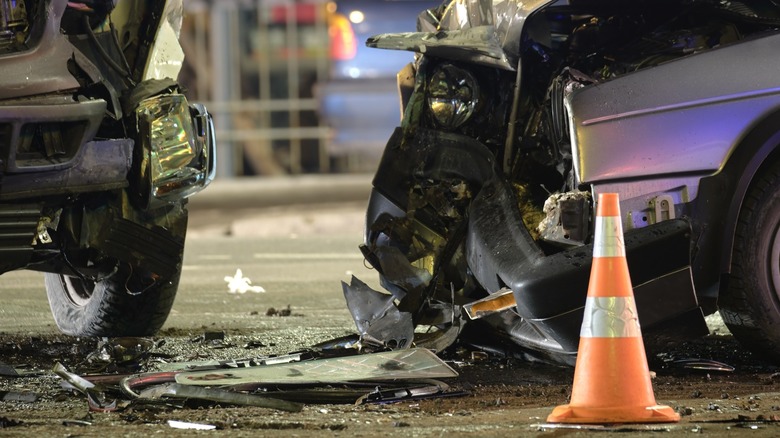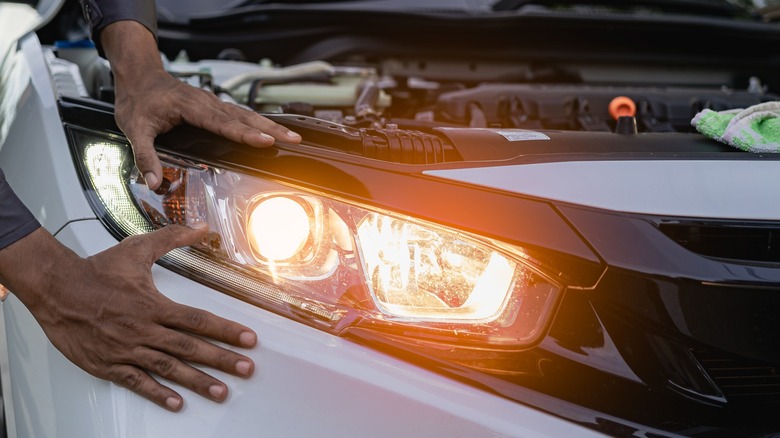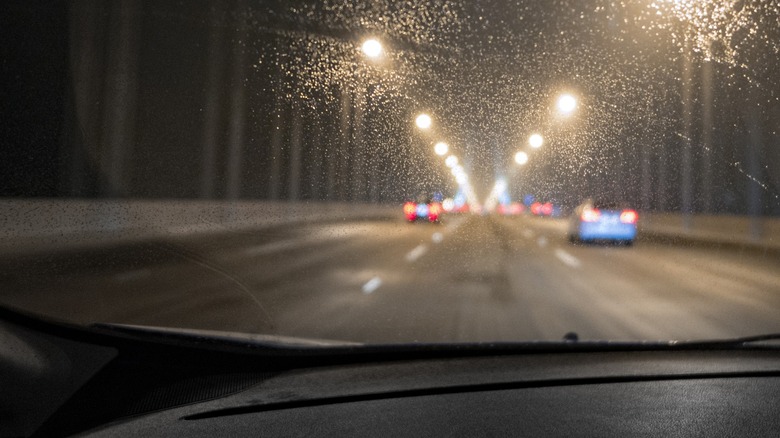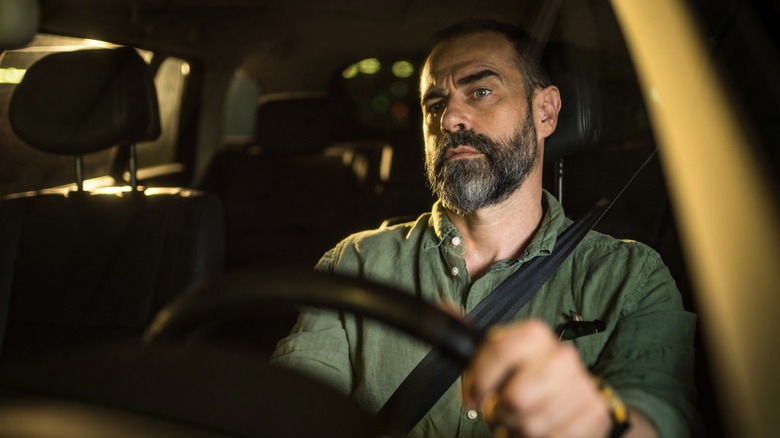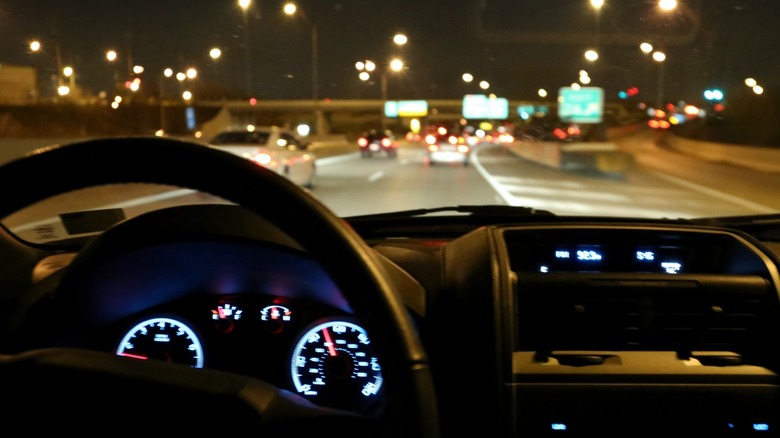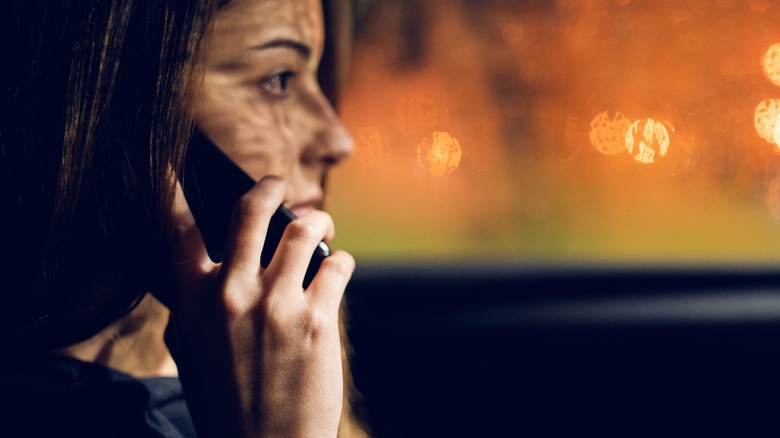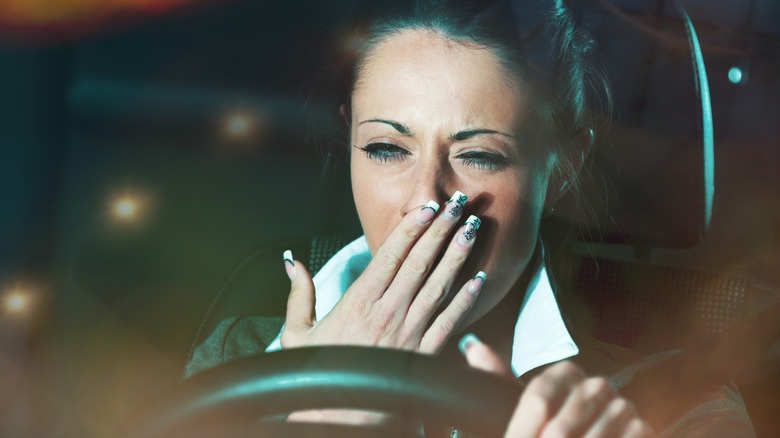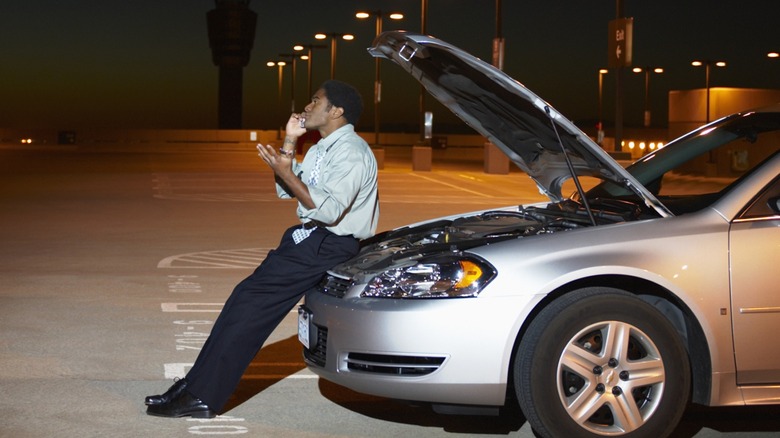7 Safety Tips For Driving At Night
Accidents occur far too often, and according to the National Highway Traffic Safety Administration (NHTSA), there were over 8,000 fatalities in the first quarter of 2024 alone. But what's even more disconcerting is that more than half of fatal car crashes happen at night. In fact, the U.S. Department of Transportation reports that fatal crashes peak between 6 PM and 6 AM, especially on weekends.
And according to the AAA Foundation, a fraction of these accidents are caused by drowsy drivers. Even though a lot of drivers agree that driving while tired is dangerous, many drivers do it regardless, and in fact, nearly a quarter of the drivers interviewed by AAA admitted to sleeping off on the wheels.
Naturally, at night, visibility becomes a challenge, and evidence from the Washington Traffic Safety Commission confirms that at night, in such low-light conditions, it becomes harder for drivers to see clearly and spot pedestrians, leading to slower reaction times.
Think about this long enough, and driving at night might start to feel downright scary. But you won't be alone because in another survey conducted by Ford, 81 percent of the drivers admitted they were scared of being on the road at night. But driving at night isn't something a lot of us can avoid altogether.
While it's important to be aware of these risks, it's equally important to learn how to stay safe. In this article, we'll walk you through how to adjust your driving habits and make sure your car is prepped for night conditions. With a few practical steps, you can protect yourself and others, and night driving doesn't have to be so stressful.
Make sure your headlights are in good condition
Your headlights play a big role in helping you drive safely at night. They help you see the road ahead, and ensure that other drivers can see you as well. Over time, the lenses can get foggy or dirty. And if we're being completely honest, headlights are probably one of the areas on your car you're not cleaning enough, or even paying much attention to. When your headlights become too dim or dirty, you won't be able to see clearly, and other road users might not see you at all.
So, make it a habit to inspect your headlights. Pay attention to the angle they are facing. Anything from how much weight you carry in your car to hitting a pothole can throw off the alignment. If your headlights are too low, you can't see far enough ahead; too high, and they may blind oncoming drivers. But this is an issue your mechanic can easily fix.
If you notice the lights are dim or dull, they appear yellowish instead of bright white, or the headlights keep flickering, it means you might need to either clean the lens or replace the bulbs inside. While there are several options you could explore to restore your car's headlight, don't make the mistake of using clear coat paint on cloudy headlights. And if your headlight burns out, fix it as soon as possible and avoid driving at night until you've replaced it. Driving without working headlights is unsafe and illegal.
Additionally, most states require you to turn on your headlights in three situations: after sunset and before sunrise, when you can't see about 500 feet to 1000 feet ahead of you, and when the weather's bad and the wipers are on.
Keep your windshield and windows clean
When driving at night, every component of your car that helps you see the road needs to be clean and in good condition. While It's easy to understand how working headlights improve your visibility, not everyone thinks about their windshields, windows, and mirrors in the same way.
Yet, being momentarily blinded by the glare from streetlights or oncoming headlights can be incredibly distracting and annoying. This can happen even with a clean windshield, but a dirty one makes it far worse. And simply wiping it with your hand isn't helpful. The natural oils on your skin can leave smudges that only make the problem worse, so use a microfiber towel instead.
Additionally, sometimes, when you drive at high speeds, tiny particles like sand can repeatedly hit your windshield, causing something known as windshield pitting. It's essentially when little particles embed themselves in your windshield and cause small craters. These small craters in the glass can distort how light hits your windshield. It might blind you for a few seconds, but a few seconds where your eyes aren't on the road can be dangerous.
Over time, windshield pitting can also wear down your wipers. When your wipers are bad, it's a struggle to keep your windshield clean and clear, especially during rain or snow. So, make sure you take care of your windshield and replace the wipers. Don't forget your windows and mirrors too. Dirty side windows can make it harder to check blind spots, while smudged or foggy mirrors can prevent you from seeing vehicles behind or beside you.
Make sure you can see the road properly
It's one thing to make sure your car doesn't distort your view of the road; it's another to make sure you can actually see the road. And let's be honest, there's a whole spectrum of eye conditions that make driving at night difficult and downright dangerous. If you're nearsighted, spotting objects in the distance becomes harder, which isn't ideal when you need to see what's ahead on the road. Astigmatism affects how light interacts with your eyes, so you might find glares from headlights and streetlights even more obnoxious. With long-sightedness, you may even struggle to read your own dashboard.
So, if things are starting to look a bit blurry or your vision isn't as sharp as it used to be, it's a good idea to schedule an eye exam. That way, you'll be able to get an accurate diagnosis and receive medical care that'll help you see as clearly as possible. If you wear glasses, choose lenses with an anti-glare or anti-reflective coating. This will help reduce glare from oncoming headlights and streetlights and make driving at night less stressful for your eyes.
Also, while it's important to keep your eyes on the road, try not to stare directly at oncoming headlights. When another vehicle approaches, shift your gaze down and to the right. Use the edge of the road or lane markings to help you stay on track. Once the vehicle has passed, you can look straight ahead again.
Maintain an appropriate pace
No matter how good your eyesight is, at night, your vision is naturally limited. You need extra time to spot and respond to anything that might come your way. While you can't control every potential situation that could occur on the road, you can control your speed. When you drive at a slow and steady pace, you'll be giving yourself more time to react and avoid a potential collision.
In addition to managing your speed, be mindful of other drivers. Other drivers can be unpredictable, especially at night. When you maintain an appropriate following distance, you can avoid a collision. So, watch out for other drivers who are swerving, making sudden stops, or speeding excessively. In fact, give reckless drivers a wide berth. If someone's driving aggressively, let them pass. Your priority is getting to your destination safely.
At night, other drivers aren't the only risks. Keep an eye out for other road users like pedestrians and cyclists, especially at night, when they can be harder to see. On rural roads, animals may also appear out of nowhere, and you might notice the reflection of their eyes in your headlights before you actually see the animal itself. If you've maintained a reasonable pace, you should have enough time to slow down or stop. Additionally, always remember to put on your seatbelt, not just because this is required by law, but because in an accident, it could be what saves your life.
Avoid distractions
As a rule, avoid distractions entirely. Stay off your phone, minimize conversations with passengers, and keep the music at a reasonable level. Anything that takes your eyes off the road for even a second can increase your risk of getting into an accident.
You should also make sure you're not becoming a distraction on the road yourself. You're obligated by the law in most states to always dim your headlights when approaching an oncoming vehicle to avoid disorienting other drivers and do the same when following another car closely. If you're considering a new car, you can look into models with adaptive lighting systems, which can automatically adjust your headlights and high beams based on surrounding traffic.
Even if the road you're driving on is familiar, don't switch to autopilot — stay alert. If you're heading somewhere unfamiliar, you can rely on the navigation apps on your phone — like Google Maps. It usually comes with a voice navigation feature that guides you so you can stay focused on the road without constantly looking at your phone. You can even review the route ahead of time and try to memorize key turns or landmarks so you'll have a better idea of where you're going without being distracted.
Fortunately, more cars are being designed with features like automatic braking, adaptive cruise control, and collision warning sensors to assist you. While they give you a better chance to avoid a collision, never forget that they're supplementary. Until self-driving tech reaches a point of perfection, you're still in control of the car, and that means staying engaged and alert at all times.
Don't drive tired, drunk, or ill
Driving demands your focus and undivided attention. Don't drink and drive. Alcohol affects your physical coordination and your judgment as well. You may feel more confident, but your ability to assess situations and make quick decisions has reduced drastically. And there is data to show for it. According to the National Highway Traffic Safety Administration (NHTSA), drunk driving claims over 10,000 lives every year in the U.S. alone.
And don't think that driving when you're tired is any better. Believe it or not, driving while tired can be just as dangerous as driving under the influence. Studies show that driving after staying awake for 18 hours has the same effect on you as having a blood alcohol content (BAC) of 0.05 percent, and after 24 hours, it's equivalent to a BAC of 0.10 percent, which is above the legal limit in most areas. When you're tired, things can go south really fast. You could fall asleep at the wheel. Your ability to react quickly becomes much slower.
When you're ill, you also shouldn't be behind the wheel. There's a higher chance you'll make mistakes. If you're on medication, the drowsiness or disorientation it causes can make driving just as risky as driving under the influence of alcohol. In all these situations, you're not just putting yourself at risk but everyone else on the road as well.
If you're feeling unfit to drive — whether it's due to fatigue, alcohol, or illness — don't take the chance. Get someone else to drive or use public transport or a rideshare service. Sure, it might feel inconvenient, but when you weigh that against the reality of getting in a fatal accident, it's a small price to pay for your safety and the safety of others.
Keep your car in good condition
A well-maintained car makes all the difference when you're driving at night. When every part of your car is in good condition, including your engine, tires, and brakes, you're able to stay in control and avoid dangerous situations. Make sure your taillights, signal lights, and brake lights are working. While they don't help you see the road, they help others see you, and signal to other road users when you're slowing down, stopping, or turning — which reduces the risk of someone rear-ending you.
When things go wrong, and you find yourself dealing with car trouble at night, you still need to practice some safety measures. First, pull over to the side of the road, away from traffic. Turn on your hazard lights to alert other drivers that you're stopped, and turn on your interior light to make yourself more visible.
No one can predict an emergency, but just so you're not stranded, make it a habit to pack essential items in your car in case of an emergency. If you've got reflector triangles in your emergency kit, set them up a good distance behind your car. Most importantly, though, stay inside your vehicle while waiting for help. It's the safest place to be, especially if you're on a busy road. Finally, in the spirit of planning for emergencies, consider getting a roadside assistance plan under your insurance cover. You may not know this, but roadside assistance is one of the perks that come with being a member of the American Automobile Association.
